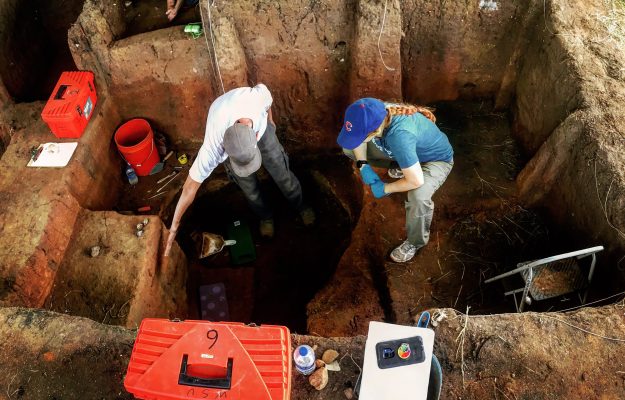Europe has historically always been considered the Old World, as well as the modern and” technological” continent from which the explorers left to discover new worlds, exporting knowledge, civilization, culture and wine. What if, instead, that isn’t the way it really went? History is in the phase of being re-examined sociologically, humanitarily and politically. And now, even regarding wine. There is an archeological site in central Texas that has found traces of a beverage, which would seem to be wine that dates back to more than 500 years ago; in other words, before the European “conquerors” arrived on the continent. History, at least what we have studied up until now, has always taught us that the Europeans brought vines and winemaking to the New World. There is new evidence, however, to support the theory that the Native Americans were already making wine from grapes. The article in the American wine magazine, Wine Spectator reports that the findings of the archeologist, anthropologist and Associate Professor at Wichita University, Dr. Crystal Dozier, were published last month in the Journal of Archaeological Science: Reports, titled “Evidence of chemical traces in the Leon Plain Pottery during the Toyah Age (1300 – 1650 A.D.) in the southern plains of America”, written together with the researchers, Doyong Kim and David Russell.
Dr. Dozier began research concerning the origins of American wine, following previous studies that had suggested the Native populations in what is now the state of Texas, would get together for celebrations and rites, utilizing ceramics. This was an unusual activity for the hunter/gatherer nomads that inhabited the area in what the researchers call the “Toyah Age”. The researchers believe these populations were the forefathers of tribes like the Apache Lipan. Furthermore, Dozier had read many accounts of Spanish explorers that talked about “wild” grapes cultivated in the Americas of the pre conquest era. “However, the accounts did not talk about wine making. So, I was curious to find out what exactly the Native populations put in their ceramic pottery”. Dozier and her team examined 54 ceramic fragments found in the six Toyah Age sites and analyzed the microscopic chemical residuals, hoping that the cups would reveal abundant anthropological responses. The chemical analysis revealed traces of caffeine in some samples, and in others traces of tartar and succinic acid, both usually present together in grapes and very rarely found together in other fruits at the same time and at the same level of concentration (“except for star fruit, whose origins are from southeast Asia”, said Dozier).
“This is the first chemical archeological test that indicates wine had been produced from native grapes in the Americas, even though it is certainly not definitive”, the researchers wrote. The discovery could have enormous repercussions, but of course, more in-depth studies and research are necessary to find out more about the wine; ie, whether it was white or red. Therefore, it becomes imperative to re-examine the wine history of the Americas.
Copyright © 2000/2025
Contatti: info@winenews.it
Seguici anche su Twitter: @WineNewsIt
Seguici anche su Facebook: @winenewsit
Questo articolo è tratto dall'archivio di WineNews - Tutti i diritti riservati - Copyright © 2000/2025








































































































































































































